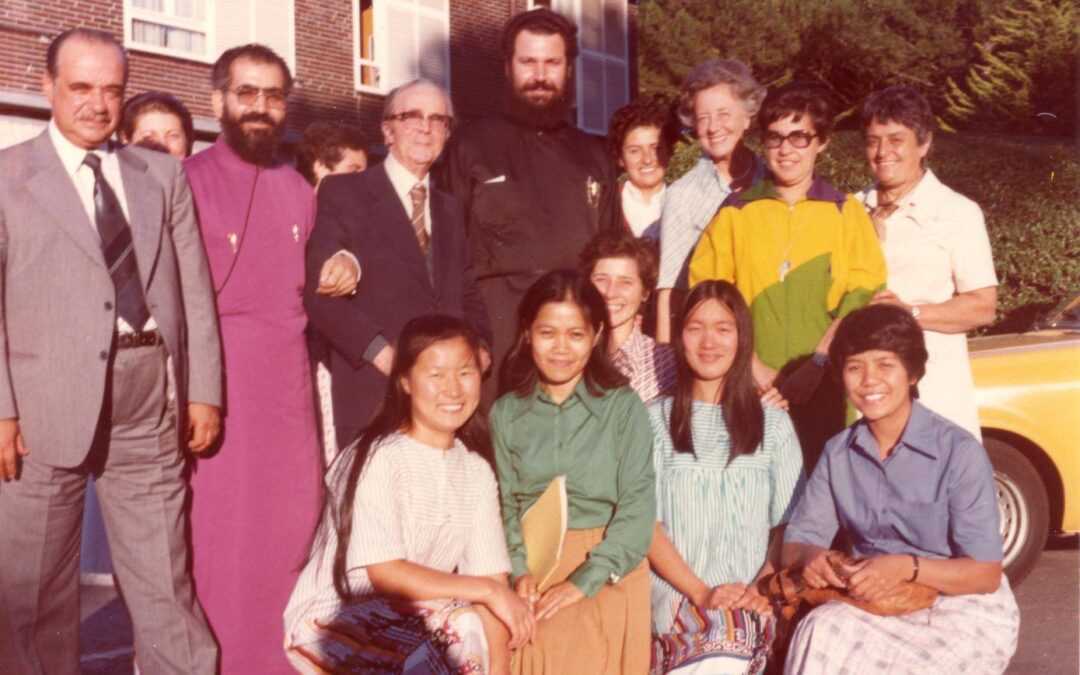
Jan 18, 2016 | Non categorizzato
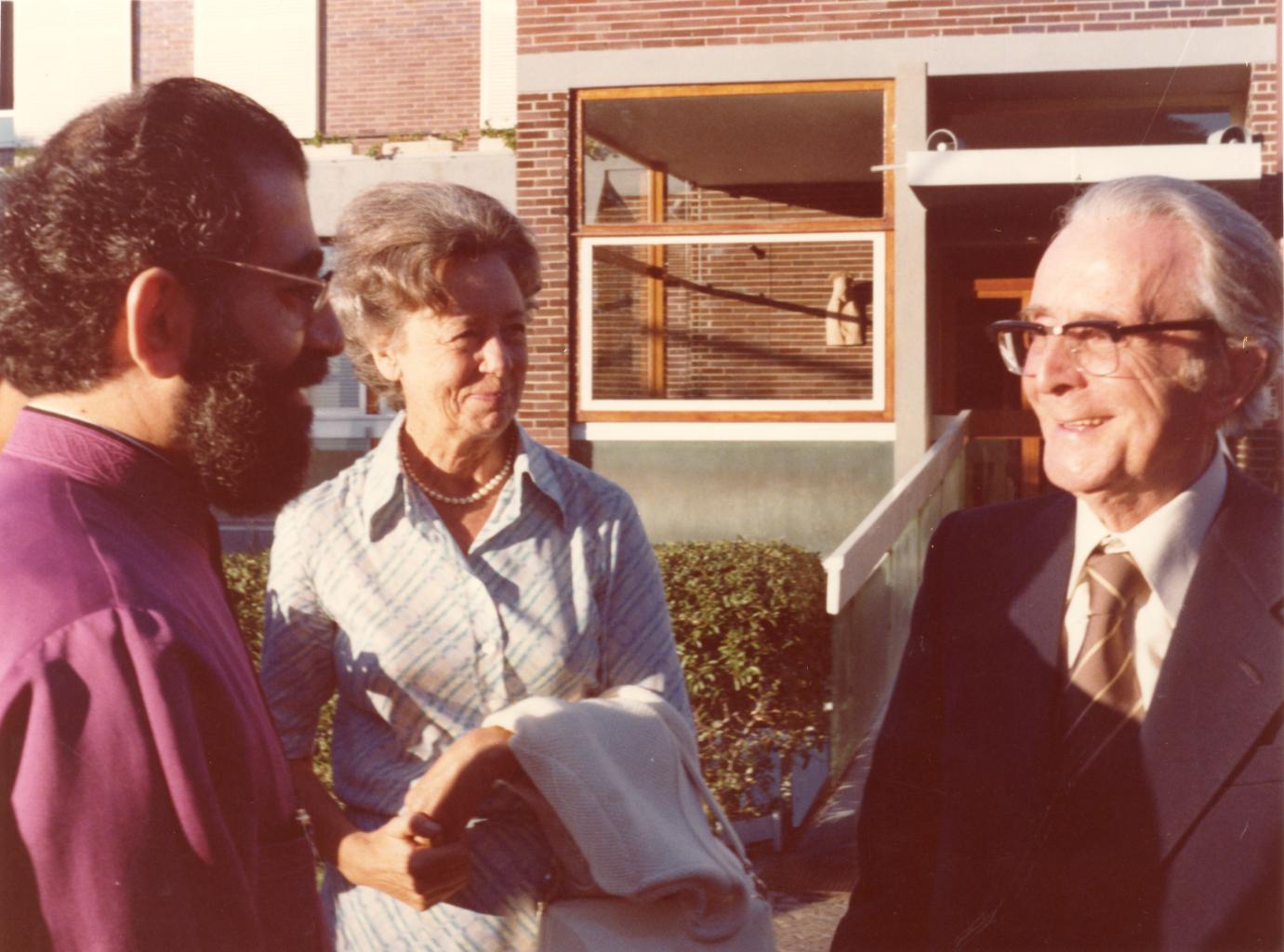 Igino Giordani was a forerunner of ecumenism. His sensitivity to ecumenical issues began when in 1927, he embarked on a ship for the USA to study Library Science on behalf of the Vatican. It was there that he discovered that he still was unfamiliar with the various Christian denominations and was deeply struck by their religiosity. In many previous writings, Giordani affirmed that ecumenical dialogue draws inspiration from the model of Trinitarian relationships, because all are set on the same level of love. Communion calls all to dialogue, and in the same measure, all are called to give of themselves to create unity. “In the past, discussions were undertaken to eliminate divisions; today the preferred method is respectful confrontation of ideas, and the effort to reach a convergence and reconciliation. The concept today is that unity is not static but dynamic, and grows in quantity and quality. Dialogue thus marks an innovative “historic turning point,” overcoming controversies, disagreements, excommunication, and likewise sets the grounds for comprehension, approach to the truth and virtues of the others. Dialogue, through which advocates of one or more churches get together, is neither propagandistic nor academic. Possessing the truth does not hinder the inexorable penetration of the mysteries or the real progress of the dogmas which are to be studied in depth, and reinterpreted.
Igino Giordani was a forerunner of ecumenism. His sensitivity to ecumenical issues began when in 1927, he embarked on a ship for the USA to study Library Science on behalf of the Vatican. It was there that he discovered that he still was unfamiliar with the various Christian denominations and was deeply struck by their religiosity. In many previous writings, Giordani affirmed that ecumenical dialogue draws inspiration from the model of Trinitarian relationships, because all are set on the same level of love. Communion calls all to dialogue, and in the same measure, all are called to give of themselves to create unity. “In the past, discussions were undertaken to eliminate divisions; today the preferred method is respectful confrontation of ideas, and the effort to reach a convergence and reconciliation. The concept today is that unity is not static but dynamic, and grows in quantity and quality. Dialogue thus marks an innovative “historic turning point,” overcoming controversies, disagreements, excommunication, and likewise sets the grounds for comprehension, approach to the truth and virtues of the others. Dialogue, through which advocates of one or more churches get together, is neither propagandistic nor academic. Possessing the truth does not hinder the inexorable penetration of the mysteries or the real progress of the dogmas which are to be studied in depth, and reinterpreted.  “Ecumenical dialogue does not arise from the doctrinal differences between the two (or more) churches, but from unity which already exists among them, from a common heritage. The psychological atmosphere is kindness, or rather, charity. In the words of Maritain: “Perfect charity towards one’s neighbour and perfect fidelity to the truth are not only compatible but refer to one another.” For the prophetic mission of the People of God, the Christian has to convey the truths he possesses and allow the other to convey the truths he holds. For such a prophetic mission, the Christian must not limit dialogue to the theological aspect (making it a task for experts). Unity is not only a technical and theological issue, it is a question of charity. «The interlocutors have to treat each other as peers, and with reciprocal esteem, no insinuations or sly tricks, and no offensive words. This equality does not signify confusion or adjustment of doctrines. It implies for both, awareness of belonging to the Mystical Body of Christ. They have to accept pluralism, recognising every legitimate diversity. What unites the faithful is stronger than what divides them (Gaudium et Spes, 92). Otherwise, dialogue is reduced to an alternated monologue. All Christians are called to practice dialogue which can be enhanced by every encounter (work, tourism, studies, etc.). No fences can be allowed between one confession and the other: but all doors should be opened to reach an encounter and dialogue. The job is long and tedious, but God wants this from us.”
“Ecumenical dialogue does not arise from the doctrinal differences between the two (or more) churches, but from unity which already exists among them, from a common heritage. The psychological atmosphere is kindness, or rather, charity. In the words of Maritain: “Perfect charity towards one’s neighbour and perfect fidelity to the truth are not only compatible but refer to one another.” For the prophetic mission of the People of God, the Christian has to convey the truths he possesses and allow the other to convey the truths he holds. For such a prophetic mission, the Christian must not limit dialogue to the theological aspect (making it a task for experts). Unity is not only a technical and theological issue, it is a question of charity. «The interlocutors have to treat each other as peers, and with reciprocal esteem, no insinuations or sly tricks, and no offensive words. This equality does not signify confusion or adjustment of doctrines. It implies for both, awareness of belonging to the Mystical Body of Christ. They have to accept pluralism, recognising every legitimate diversity. What unites the faithful is stronger than what divides them (Gaudium et Spes, 92). Otherwise, dialogue is reduced to an alternated monologue. All Christians are called to practice dialogue which can be enhanced by every encounter (work, tourism, studies, etc.). No fences can be allowed between one confession and the other: but all doors should be opened to reach an encounter and dialogue. The job is long and tedious, but God wants this from us.”
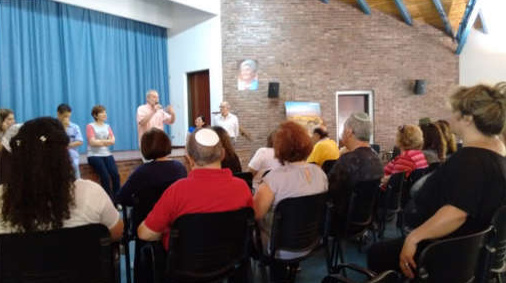
Jan 17, 2016 | Focolare Worldwide
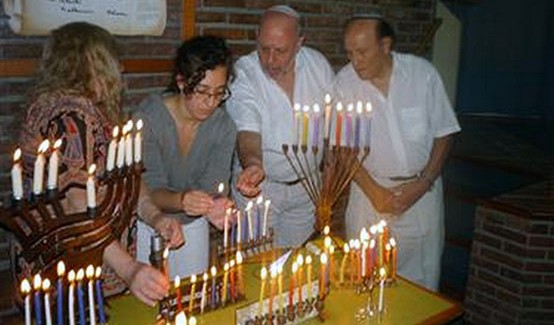 “We wanted to give a testimonial of an experience which has transformed us, and that took place on 11-13 December 2015. On this occasion some members of the Jewish Bet-El Community and the inhabitants of the Focolare town, prayed for one another,” wrote the Argentinean Rabbi, Silvina Chemen and Carlos Becaría and Nanni Espinosa of Mariapolis Lia. A special Shabbath. “We started by gathering bread for the rit,” Silvina recounted, “then we participated and shared this moment in which the Hanuka candles were lit, and we recalled the historical pact celebrated by Chiara Lubich and the Jews of Buenos Aires in 1998. Under the trees, we sang together and waited for the sunset to receive the stars that announced the arrival of the Shabbath. And then hand in hand, we entered the hall which was transformed into a synagogue for the occasion. Together we prayed the Shabbath vespers, and shared the Saturday morning prayer and the reading of the Torah scroll. It was a sacred moment.”
“We wanted to give a testimonial of an experience which has transformed us, and that took place on 11-13 December 2015. On this occasion some members of the Jewish Bet-El Community and the inhabitants of the Focolare town, prayed for one another,” wrote the Argentinean Rabbi, Silvina Chemen and Carlos Becaría and Nanni Espinosa of Mariapolis Lia. A special Shabbath. “We started by gathering bread for the rit,” Silvina recounted, “then we participated and shared this moment in which the Hanuka candles were lit, and we recalled the historical pact celebrated by Chiara Lubich and the Jews of Buenos Aires in 1998. Under the trees, we sang together and waited for the sunset to receive the stars that announced the arrival of the Shabbath. And then hand in hand, we entered the hall which was transformed into a synagogue for the occasion. Together we prayed the Shabbath vespers, and shared the Saturday morning prayer and the reading of the Torah scroll. It was a sacred moment.”  Sharing and dialogue. “In the afternoon, there was an equally important event for the Jews –Carlos narrates – which consisted of a preparation for the mass. We had anticipated their request to participate and thus fixed the schedule. During the prayer of the faithful, one special prayer was for peace and dialogue among us (Bet-El Community and the Focolare) we all were deeply moved. This feeling of unity continued all afternoon in a workshop on dialogue, with the participation of all the Christian youth who attend the town’s school. We shared our queries, doubts, expectations on dialogue and our various traditions, with liberty and depth. We concluded by decorating the Christmas tree on which we also hung our secret wishes.” End of the Shabbath. “Then we all gathered in the open air, Nanni continued – to each light our candles until a circle of light was formed. Then the sound of the Shofar horn, as the Bible explains, accompanied the rite since it was another sacred moment.” We did not only pray, but also shared artistic talents in «an evening filled with joy and harmony, where once again Chiara Lubich’s presence was felt through a painting which Sofia of the Bet-El Community offered as a gift to the town. She had also participated in the meeting last year, and felt personally addressed by the message and the figure of Chiara,» Carlos added. On Sunday there was a tour of the town. “After having reflected on some aspects of the history and the spirituality of the Movement – Nanni said – they visited the various sectors of the town and the day ended in the Vittorio Sabbione Auditorium. A new depth and God’s presence among us were felt in the reading of the First Testament. Those of us who remained in the Mariapolis felt that something had changed in us, and those who returned to Buenos Aires departed with the joy of the discovery of new brothers and sisters. And this was confirmed in the impression of one Jewish participant: ‘It is my third time here in Mariapolis Lia. Every time I left it was with the desire to return. Today instead, I feel part of this experience, and this town is now part of me as I am part of it.’ Next year’s schedule has been set!” Gustavo Clariá
Sharing and dialogue. “In the afternoon, there was an equally important event for the Jews –Carlos narrates – which consisted of a preparation for the mass. We had anticipated their request to participate and thus fixed the schedule. During the prayer of the faithful, one special prayer was for peace and dialogue among us (Bet-El Community and the Focolare) we all were deeply moved. This feeling of unity continued all afternoon in a workshop on dialogue, with the participation of all the Christian youth who attend the town’s school. We shared our queries, doubts, expectations on dialogue and our various traditions, with liberty and depth. We concluded by decorating the Christmas tree on which we also hung our secret wishes.” End of the Shabbath. “Then we all gathered in the open air, Nanni continued – to each light our candles until a circle of light was formed. Then the sound of the Shofar horn, as the Bible explains, accompanied the rite since it was another sacred moment.” We did not only pray, but also shared artistic talents in «an evening filled with joy and harmony, where once again Chiara Lubich’s presence was felt through a painting which Sofia of the Bet-El Community offered as a gift to the town. She had also participated in the meeting last year, and felt personally addressed by the message and the figure of Chiara,» Carlos added. On Sunday there was a tour of the town. “After having reflected on some aspects of the history and the spirituality of the Movement – Nanni said – they visited the various sectors of the town and the day ended in the Vittorio Sabbione Auditorium. A new depth and God’s presence among us were felt in the reading of the First Testament. Those of us who remained in the Mariapolis felt that something had changed in us, and those who returned to Buenos Aires departed with the joy of the discovery of new brothers and sisters. And this was confirmed in the impression of one Jewish participant: ‘It is my third time here in Mariapolis Lia. Every time I left it was with the desire to return. Today instead, I feel part of this experience, and this town is now part of me as I am part of it.’ Next year’s schedule has been set!” Gustavo Clariá
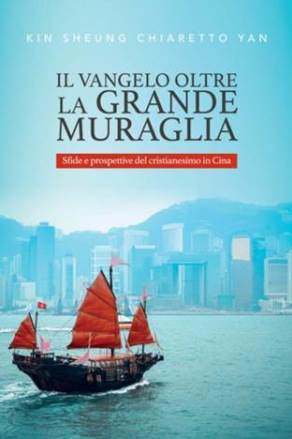
Jan 16, 2016 | Focolare Worldwide
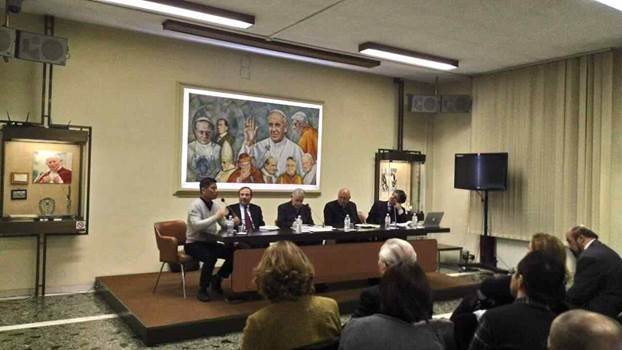 Last 8 January, the presentation of the Italian edition of the book by the Chinese scholar who has worked on this topic for years and is now terminating his Research Doctorate program at the SUI, could not go unobserved due to the location of the presentation – the Vatican Radio Headquarters in Rome. The speeches of the guests aroused great interest and among the guests were: Claudio Maria Celli, President of the Pontifical Council for Social Communications, Fr. Federico Lombardi, the Press Office Director of the Holy See, and of the Vatican Radio, Agostino Giovagnoli, the historian, and Gianni Valente, Vatican expert. But what especially was underlined in the numerous articles released subsequently in the media and network was the theme on the development of Christianity in China, and Chiaretto Yan’s vision in the book, “The Gospel Beyond the Great Wall. Challenges and perspectives of Christianity in China” (Emi 2015), which interpreted the progress of the relationships with the Holy See in the light of fidelity and openness to dialogue. This interpretation was also confirmed by Fr. Lombardi in recalling some very significant expressions of Pope Francis, who publicly stressed on several occasions “his desire to go to China,” saying that “we can freely say that dialogue is being pursued with the authorities” to find solutions to issues that are still open, and that “there is a great desire to make progress.”
Last 8 January, the presentation of the Italian edition of the book by the Chinese scholar who has worked on this topic for years and is now terminating his Research Doctorate program at the SUI, could not go unobserved due to the location of the presentation – the Vatican Radio Headquarters in Rome. The speeches of the guests aroused great interest and among the guests were: Claudio Maria Celli, President of the Pontifical Council for Social Communications, Fr. Federico Lombardi, the Press Office Director of the Holy See, and of the Vatican Radio, Agostino Giovagnoli, the historian, and Gianni Valente, Vatican expert. But what especially was underlined in the numerous articles released subsequently in the media and network was the theme on the development of Christianity in China, and Chiaretto Yan’s vision in the book, “The Gospel Beyond the Great Wall. Challenges and perspectives of Christianity in China” (Emi 2015), which interpreted the progress of the relationships with the Holy See in the light of fidelity and openness to dialogue. This interpretation was also confirmed by Fr. Lombardi in recalling some very significant expressions of Pope Francis, who publicly stressed on several occasions “his desire to go to China,” saying that “we can freely say that dialogue is being pursued with the authorities” to find solutions to issues that are still open, and that “there is a great desire to make progress.” 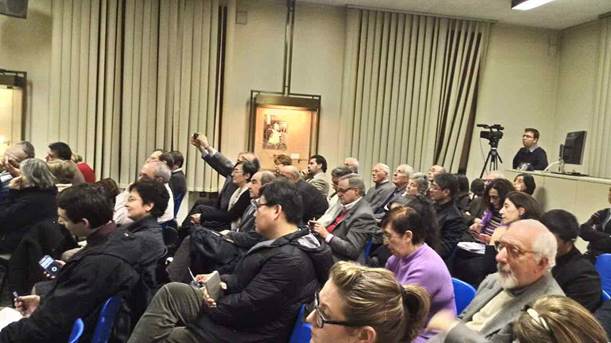 A substantial continuity of perspectives is evident in the actions of the last three Popes, from John Paul II to Francis. Among the cues offered by Bishop Celli was an episode he personally experienced, which conveys more than the many affirmations on the deep attention and participation with which John Paul II had always supported the life of Christians in China. “He was already confined to the wheelchair when he said to me: ‘Do you think I will be able to go to China?” Bishop Celli further affirmed that “Dialogue is not easy – but the pathway is absolutely that of going ahead.” The historian, Agostino Giovagnoli, underlined “the novelty in continuity” consisting in the more liberal approach of Francis in speaking about China. “The Chinese perceive his determination in wanting to change the relationships between China and the Holy See – he observed. This is a source of security that sweeps away the uncertainties of the past.” Also the journalist, Gianni Valente listed a series of recent openings.
A substantial continuity of perspectives is evident in the actions of the last three Popes, from John Paul II to Francis. Among the cues offered by Bishop Celli was an episode he personally experienced, which conveys more than the many affirmations on the deep attention and participation with which John Paul II had always supported the life of Christians in China. “He was already confined to the wheelchair when he said to me: ‘Do you think I will be able to go to China?” Bishop Celli further affirmed that “Dialogue is not easy – but the pathway is absolutely that of going ahead.” The historian, Agostino Giovagnoli, underlined “the novelty in continuity” consisting in the more liberal approach of Francis in speaking about China. “The Chinese perceive his determination in wanting to change the relationships between China and the Holy See – he observed. This is a source of security that sweeps away the uncertainties of the past.” Also the journalist, Gianni Valente listed a series of recent openings.  Chiaretto Yan’s study highlights the transition of various phases, which along with unforeseeable and at times dramatic hitches, reopened old wounds, but also evidenced a progressive slackening of the tensions and the perception of dialogue that is maturing also because of the better means of direct communication after the blackout that had marked the years of persecution. Over the last 20 years, the most felt request has been that of putting an end to the gaps between the various ecclesial communities, in the name of a “sole Church and more communities.” Dating back to 2007 is Benedict XVI’s historical letter to the Chinese Catholics, a top magisterial declaration that requested to end the internal and external conflicts to enhance dialogue. Pope Francis’s full recognition of this document again confirms the intent to pursue this path. “The Challenge the Church is facing – concluded Chiaretto Yan in answering a journalist’s question – remains the same: testifying to unity while remaining distinct. This perspective may also mean giving support to the life of various ecclesial communities within the same solid experience of communion.” Source: www.iu-sophia.org
Chiaretto Yan’s study highlights the transition of various phases, which along with unforeseeable and at times dramatic hitches, reopened old wounds, but also evidenced a progressive slackening of the tensions and the perception of dialogue that is maturing also because of the better means of direct communication after the blackout that had marked the years of persecution. Over the last 20 years, the most felt request has been that of putting an end to the gaps between the various ecclesial communities, in the name of a “sole Church and more communities.” Dating back to 2007 is Benedict XVI’s historical letter to the Chinese Catholics, a top magisterial declaration that requested to end the internal and external conflicts to enhance dialogue. Pope Francis’s full recognition of this document again confirms the intent to pursue this path. “The Challenge the Church is facing – concluded Chiaretto Yan in answering a journalist’s question – remains the same: testifying to unity while remaining distinct. This perspective may also mean giving support to the life of various ecclesial communities within the same solid experience of communion.” Source: www.iu-sophia.org
Jan 15, 2016 | Non categorizzato
Maria Voce, the president of the Focolare Movement and Jesús Morán, Co-president, will be in India from January 15 to February 10, 2016. Following the trail left by Chiara Lubich in 2001 and 2003, they will visit the Focolare communities in various parts of the country. They are expected to visit New Delhi, Bangalore, Trichy, Coimbatore and Mumbai. The dimension of interreligious dialogue, started by the founder of the Focolare Movement, will be the highlight of their program during these weeks.
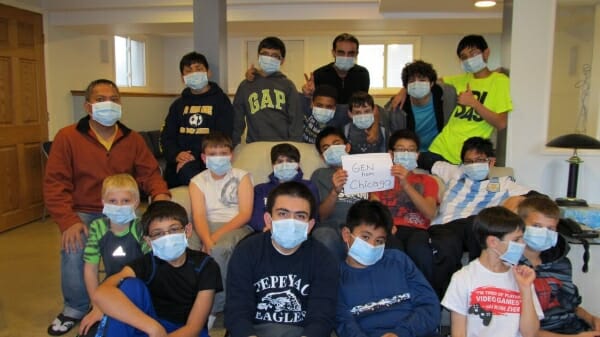
Jan 15, 2016 | Focolare Worldwide
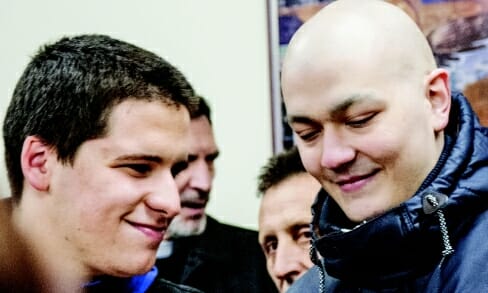 “I love swimming and automobiles; the minute I recover I will get my license. I have a sister whom I love and my elder brother is my model. I listen to almost all types of music, especially techno. I’d love to have a dog… I never used to read but now I find it very interesting, also because it makes time go faster in the hospital .” One evening at the cinema with his sister, he felt pain in a tooth. He would never have imagined that it was the first symptom of something serious. In the following days his left cheek got swollen and he could hardly open his mouth. «It hurt a lot, but instead of going to the dentist, I tried to treat it myself with packs and cream. Nothing helped and it got worse. In the end I went to the dentist who was shocked and immediately sent me to a surgeon who had me hospitalised. I was surprised but did not worry too much, thinking that I could go home in a few days.» The analyses, however, showed that something was wrong in his blood. He was transferred to another ward, and then to another clinic. In the end the diagnosis was severe: leukemia. “I didn’t know anything about this disease,” Nikola recounted, “I could not imagine that I had to undergo chemotherapy and that the treatment would be long. I started the first chemo sessions and I felt as if I was losing my mind. My brain was full of the darkest thoughts. I started to doubt the existence of God and asked myself why this was happening to me. What had I done wrong, or perhaps He had abandoned me? I sought the answer and understood that this illness is a message of God for me. I experienced His presence in a stronger way, He was always by my side and I felt that he wanted something from me, and wondered what it could be. All sorts of things came to mind. Perhaps I had to give myself totally to the others? The disease roused me from an empty life that was moving before my eyes, it made me change my vision of the world and now I see things in a more serene way. One of the things I did was to stop smoking, and I am really proud of this! Here in the hospital I met really nice people and a pair of good friends. One sunny day I opened the window and saw a girl walk by. I looked at her and she smiled at me warmly. Later I discovered that she was a nurse. I understood then that happiness lies in the small signs of care, like this. A boy told me: all that is mine is yours. No one has ever said such a thing to me. I felt a great joy.”
“I love swimming and automobiles; the minute I recover I will get my license. I have a sister whom I love and my elder brother is my model. I listen to almost all types of music, especially techno. I’d love to have a dog… I never used to read but now I find it very interesting, also because it makes time go faster in the hospital .” One evening at the cinema with his sister, he felt pain in a tooth. He would never have imagined that it was the first symptom of something serious. In the following days his left cheek got swollen and he could hardly open his mouth. «It hurt a lot, but instead of going to the dentist, I tried to treat it myself with packs and cream. Nothing helped and it got worse. In the end I went to the dentist who was shocked and immediately sent me to a surgeon who had me hospitalised. I was surprised but did not worry too much, thinking that I could go home in a few days.» The analyses, however, showed that something was wrong in his blood. He was transferred to another ward, and then to another clinic. In the end the diagnosis was severe: leukemia. “I didn’t know anything about this disease,” Nikola recounted, “I could not imagine that I had to undergo chemotherapy and that the treatment would be long. I started the first chemo sessions and I felt as if I was losing my mind. My brain was full of the darkest thoughts. I started to doubt the existence of God and asked myself why this was happening to me. What had I done wrong, or perhaps He had abandoned me? I sought the answer and understood that this illness is a message of God for me. I experienced His presence in a stronger way, He was always by my side and I felt that he wanted something from me, and wondered what it could be. All sorts of things came to mind. Perhaps I had to give myself totally to the others? The disease roused me from an empty life that was moving before my eyes, it made me change my vision of the world and now I see things in a more serene way. One of the things I did was to stop smoking, and I am really proud of this! Here in the hospital I met really nice people and a pair of good friends. One sunny day I opened the window and saw a girl walk by. I looked at her and she smiled at me warmly. Later I discovered that she was a nurse. I understood then that happiness lies in the small signs of care, like this. A boy told me: all that is mine is yours. No one has ever said such a thing to me. I felt a great joy.”  “I was lucky, because I was found to be compatible with my brothers for the stem cell transplant. This shortens the treatment time and the probability of a relapse. I am so grateful for all the prayers and messages coming from all over the world through Facebook. In the hospital we keep one another company, and when we are with a group of young people, time flies. Then I have a good brother who left me his PC! So I can watch films, surf the internet… I spent a lot of time in prayer. The conditions we are living in are not easy, but we will get used to it…”. When asked what he would like to say to his peers, Nikola answered: “I would say: learn from the past, go ahead and plan for the future, but most of all, live the present moment. This is what I have learned. Be aware that true happiness can be reached with small signs of attention and do not worry for tomorrow, because when you learn to do this, you will feel much better. When you get negative thoughts, substitute them with positive ones. Do this every time and with time they will disappear. Love those you encounter and always be grateful for all you have.” Fonte: Novi Svet 1-2. / 2015
“I was lucky, because I was found to be compatible with my brothers for the stem cell transplant. This shortens the treatment time and the probability of a relapse. I am so grateful for all the prayers and messages coming from all over the world through Facebook. In the hospital we keep one another company, and when we are with a group of young people, time flies. Then I have a good brother who left me his PC! So I can watch films, surf the internet… I spent a lot of time in prayer. The conditions we are living in are not easy, but we will get used to it…”. When asked what he would like to say to his peers, Nikola answered: “I would say: learn from the past, go ahead and plan for the future, but most of all, live the present moment. This is what I have learned. Be aware that true happiness can be reached with small signs of attention and do not worry for tomorrow, because when you learn to do this, you will feel much better. When you get negative thoughts, substitute them with positive ones. Do this every time and with time they will disappear. Love those you encounter and always be grateful for all you have.” Fonte: Novi Svet 1-2. / 2015
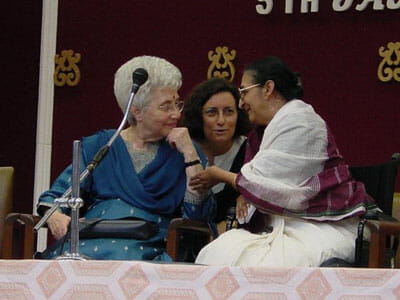
Jan 13, 2016 | Focolare Worldwide
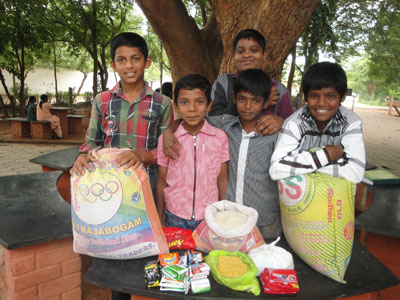 “A society is good when the last and smallest member of society will have the opportunity to produce and earn sufficiently for a decent and dignified living.” This was the ideal of the philosophy which in 1986 pushed Dr Aram and his wife, Minoti, and a group of Gandhian friends, to start up the Shanti Ashram of Coimbatore in Tamil Nadu. Literacy, development of the conditions of women, healthcare, environmental politics, battle against poverty, leadership programs for the youth and projects for children, are the actions promoted by the Ashram, of which the Bala Shanti project is part, and which was created in 1991 to help the very poor children in the surrounding villages. In 2013, Mrs Minoti wrote: “Tagore, the much loved poet and Nobel Prize awardee said: ‘Every boy and girl is a harbinger of the message that God still has not lost hope in man.’ It is in this context that I see the work for our children: to be able to serve one of the most precious gifts of God to humanity.” Initially the Bala Shanti project aimed to offer nutrition, education and healthcare to a small group of children from the ages of 3 to 5. Today the project helps thousands of children in 17 villages, who are in turn directly involved with their families in the battle against poverty, stirring up a proactive social participation.
“A society is good when the last and smallest member of society will have the opportunity to produce and earn sufficiently for a decent and dignified living.” This was the ideal of the philosophy which in 1986 pushed Dr Aram and his wife, Minoti, and a group of Gandhian friends, to start up the Shanti Ashram of Coimbatore in Tamil Nadu. Literacy, development of the conditions of women, healthcare, environmental politics, battle against poverty, leadership programs for the youth and projects for children, are the actions promoted by the Ashram, of which the Bala Shanti project is part, and which was created in 1991 to help the very poor children in the surrounding villages. In 2013, Mrs Minoti wrote: “Tagore, the much loved poet and Nobel Prize awardee said: ‘Every boy and girl is a harbinger of the message that God still has not lost hope in man.’ It is in this context that I see the work for our children: to be able to serve one of the most precious gifts of God to humanity.” Initially the Bala Shanti project aimed to offer nutrition, education and healthcare to a small group of children from the ages of 3 to 5. Today the project helps thousands of children in 17 villages, who are in turn directly involved with their families in the battle against poverty, stirring up a proactive social participation.

Chiara Lubich with Minor Aram (2002) – © Centro S. Chiara Audiovisivi

Jan 12, 2016 | Focolare Worldwide
 “Villa delle Querce was said to be a clinic where people went to die. I knew nothing about this since I was only a 15-year-old boy happily biking around the neighbourhood. Places such as these were kept a secret. But I was curious to find out what went on in there. From the outside it seemed to me as if there were old people walking on trees. In actual fact it was the 7th floor of a psychiatric hospital which was hidden by the trees but which had a balcony around which the patients would often walk. I entered the place out of curiosity, but I was immediately assaulted by five elderly people who started shouting at me. I saw a young man in a wheelchair and with the excuse of visiting him, they let me pass. Among this motley group of patients there was also a highly respected man called Gianni with whom I struck up a friendship. Gianni immediately spoke to me of his illness which he had contracted at the age of 24. Up until then he’d had a career in the navy as well as in the cinema. He had to give up the beautiful girls and the lavish lifestyle; now there was only solitude and the fear of a slow death. He asked me to bring him some poison so as to commit suicide. I returned to see him a week later and at that point he could no longer speak. He had thrown himself down from the 7th floor with his wheelchair, but after a flight of stairs it had stopped. Consequently he was confined to bed. My only answer to his desperation was to tell him to believe that God loved him and I saw this grace had touched his heart when his eyes suddenly started to shine like the sea reflecting the sun. He started to laugh heartily and our conversation continued only through the movement of his eyebrows which I was able to interpret. I asked the questions or made suggestions and he answered with his eyebrows or with a fantastic smile. I started to take to him all sorts of visitors, like for instance a rebellious girl whom he transformed into a perfect nurse through his good humour. Another girl, through contact with him, overcame her own self-hatred because of her body image. Her life changed completely. Other visitors included atheists, religious people and missionaries. He connected with each one of them and this prolonged his life. There was one episode when the medical staff had almost given up on him after an operation only to see him revive and give one of his beautiful smiles. I have a great photo of Gianni with Pope Paul VI who had asked him for prayers. Now that they are together in heaven, they are a source of strength for us, and help us to smile even in pain.” (Fr Marco S. – Italy)
“Villa delle Querce was said to be a clinic where people went to die. I knew nothing about this since I was only a 15-year-old boy happily biking around the neighbourhood. Places such as these were kept a secret. But I was curious to find out what went on in there. From the outside it seemed to me as if there were old people walking on trees. In actual fact it was the 7th floor of a psychiatric hospital which was hidden by the trees but which had a balcony around which the patients would often walk. I entered the place out of curiosity, but I was immediately assaulted by five elderly people who started shouting at me. I saw a young man in a wheelchair and with the excuse of visiting him, they let me pass. Among this motley group of patients there was also a highly respected man called Gianni with whom I struck up a friendship. Gianni immediately spoke to me of his illness which he had contracted at the age of 24. Up until then he’d had a career in the navy as well as in the cinema. He had to give up the beautiful girls and the lavish lifestyle; now there was only solitude and the fear of a slow death. He asked me to bring him some poison so as to commit suicide. I returned to see him a week later and at that point he could no longer speak. He had thrown himself down from the 7th floor with his wheelchair, but after a flight of stairs it had stopped. Consequently he was confined to bed. My only answer to his desperation was to tell him to believe that God loved him and I saw this grace had touched his heart when his eyes suddenly started to shine like the sea reflecting the sun. He started to laugh heartily and our conversation continued only through the movement of his eyebrows which I was able to interpret. I asked the questions or made suggestions and he answered with his eyebrows or with a fantastic smile. I started to take to him all sorts of visitors, like for instance a rebellious girl whom he transformed into a perfect nurse through his good humour. Another girl, through contact with him, overcame her own self-hatred because of her body image. Her life changed completely. Other visitors included atheists, religious people and missionaries. He connected with each one of them and this prolonged his life. There was one episode when the medical staff had almost given up on him after an operation only to see him revive and give one of his beautiful smiles. I have a great photo of Gianni with Pope Paul VI who had asked him for prayers. Now that they are together in heaven, they are a source of strength for us, and help us to smile even in pain.” (Fr Marco S. – Italy)
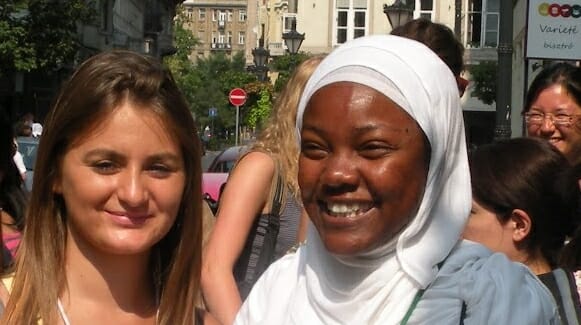
Jan 11, 2016 | Focolare Worldwide
 Hermine Schmölz, an Austrian, recounted: “About ten years ago, I realised I had to do something for the integration of Muslim immigrants, especially the women who we are still not very acquainted with, although they have lived and worked here for years now.” He spoke about this with a member of the parish. Even his friends were enthusiastic about it and together they proposed their project to the parish priest and asked him to provide a venue to begin the project. From then on, it has been a really exhilarating adventure for both the Muslim women taking part in the initiative, and the team members who delineated the program: a Lutheran lady, three Muslim women, one of whom declared that she did not have any religious beliefs and three Catholics who are Focolare members. They felt that the immediate focus should be on what the women were really interested in. It was not easy given their difficulties in expressing themselves in the new language. So the organisers tried to make each one feel at ease, creating a cordial and serene atmosphere. “We always publish the date of the meetings on the journal,” Hermine specified, “and so the group continuously expanded. We try to expound on a different and interesting topic every time: inviting different speakers – politicians, educational experts, social workers, an obstetrician, a doctor – asking them to dedicate more time also to dialogue with the women who are encouraged to speak up and express their ideas. The children have a special programme in another room, so they may from a tender age, see the importance of intercultural relationships. Every meeting ends with a buffet to which the Muslim women themselves contribute. Other activities are field trips and get-together activities. As an interreligious group, every Christmas we bring gifts to the homeless, involving the ladies in establishing relationships with people of other cultures. And as in a game, for every person contacted we add a pearl onto a necklace, and in the end we try to guess how many pearls have been added. We also have the great fortune to communicate with and get new ideas from the Focolare members of other countries, who are doing similar intercultural projects. The ladies show their appreciation for this type of reciprocal dialogue and integration, and also their husbands are happy about it.” The Focolare of New York wrote: “On 20 December – we were invited to the Malcolm Shabazz Mosque in Harlem – which Chiara Lubich visited in 1997 – to speak at the Seerah Conference.” This is an annual retreat to reflect on the life and teachings of the Prophet and Imam, W.D. Mohammed, a leader of the Afro-American Muslims. The warm reception given to the two guests invited by Imam Pasha and 200 other people was a tangible sign that the seed of dialogue sowed many years ago, continues to bear fruits. It is thus not surprising that the theme precisely chosen for that day was unity, traced through the thoughts of Imam W.D. and Chiara. The retreat ended with a brief video of Chiara Lubich, followed by a round of warm applause that seemed to express everyone’s commitment to that unity she proposed.
Hermine Schmölz, an Austrian, recounted: “About ten years ago, I realised I had to do something for the integration of Muslim immigrants, especially the women who we are still not very acquainted with, although they have lived and worked here for years now.” He spoke about this with a member of the parish. Even his friends were enthusiastic about it and together they proposed their project to the parish priest and asked him to provide a venue to begin the project. From then on, it has been a really exhilarating adventure for both the Muslim women taking part in the initiative, and the team members who delineated the program: a Lutheran lady, three Muslim women, one of whom declared that she did not have any religious beliefs and three Catholics who are Focolare members. They felt that the immediate focus should be on what the women were really interested in. It was not easy given their difficulties in expressing themselves in the new language. So the organisers tried to make each one feel at ease, creating a cordial and serene atmosphere. “We always publish the date of the meetings on the journal,” Hermine specified, “and so the group continuously expanded. We try to expound on a different and interesting topic every time: inviting different speakers – politicians, educational experts, social workers, an obstetrician, a doctor – asking them to dedicate more time also to dialogue with the women who are encouraged to speak up and express their ideas. The children have a special programme in another room, so they may from a tender age, see the importance of intercultural relationships. Every meeting ends with a buffet to which the Muslim women themselves contribute. Other activities are field trips and get-together activities. As an interreligious group, every Christmas we bring gifts to the homeless, involving the ladies in establishing relationships with people of other cultures. And as in a game, for every person contacted we add a pearl onto a necklace, and in the end we try to guess how many pearls have been added. We also have the great fortune to communicate with and get new ideas from the Focolare members of other countries, who are doing similar intercultural projects. The ladies show their appreciation for this type of reciprocal dialogue and integration, and also their husbands are happy about it.” The Focolare of New York wrote: “On 20 December – we were invited to the Malcolm Shabazz Mosque in Harlem – which Chiara Lubich visited in 1997 – to speak at the Seerah Conference.” This is an annual retreat to reflect on the life and teachings of the Prophet and Imam, W.D. Mohammed, a leader of the Afro-American Muslims. The warm reception given to the two guests invited by Imam Pasha and 200 other people was a tangible sign that the seed of dialogue sowed many years ago, continues to bear fruits. It is thus not surprising that the theme precisely chosen for that day was unity, traced through the thoughts of Imam W.D. and Chiara. The retreat ended with a brief video of Chiara Lubich, followed by a round of warm applause that seemed to express everyone’s commitment to that unity she proposed.
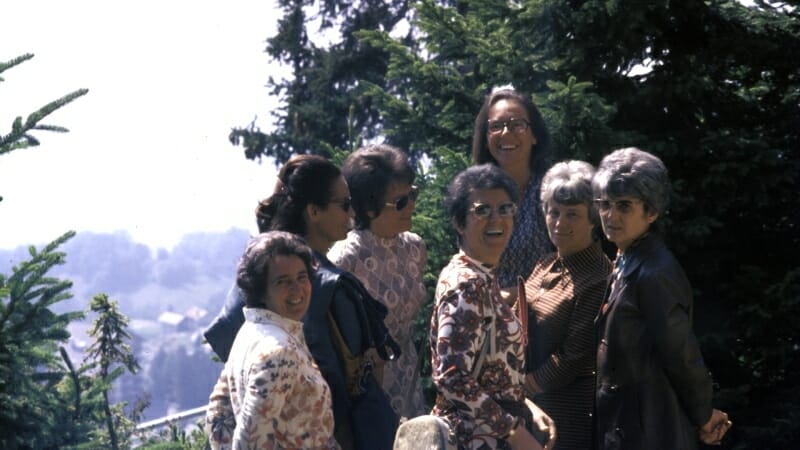
Jan 10, 2016 | Non categorizzato
 The first Focolare had an actual experience which was an application of this “being the first to love”. It was not always easy for a group of girls to live love radically, especially at the beginning. We were like other people, even though we were sustained by a special gift from God. Dust could settle on us as well, on our rapport with one another, and our unity could wilt. That happened for example upon discovering others’ faults and imperfections. When there was judgment, the flow of reciprocal love got cold. One day, we thought of making a pact among us to counter this situation. We called it the “pact of mercy”. We decided to see our neighbor in a very new way when we met him or her each morning (in the Focolare, at school, at work…), really forgetting their imperfections, their defects, covering everything with love. This meant approaching everyone with this complete amnesty in our heart, with this universal forgiveness. Everyone took this strong commitment together. It helped us to always be the first to love, imitating our merciful God who forgives and forgets. We are now sure that the Movement would not even have made it from Trent to Rovereto if it were not for this daily pact of forgiveness. Practically, the Movement would not have had the energy needed to spread. Chiara Lubich, Love of neighbor, to the Muslim friends of the Focolare Movement, Castel Gandolfo, 1st November 2002 (excerpt).
The first Focolare had an actual experience which was an application of this “being the first to love”. It was not always easy for a group of girls to live love radically, especially at the beginning. We were like other people, even though we were sustained by a special gift from God. Dust could settle on us as well, on our rapport with one another, and our unity could wilt. That happened for example upon discovering others’ faults and imperfections. When there was judgment, the flow of reciprocal love got cold. One day, we thought of making a pact among us to counter this situation. We called it the “pact of mercy”. We decided to see our neighbor in a very new way when we met him or her each morning (in the Focolare, at school, at work…), really forgetting their imperfections, their defects, covering everything with love. This meant approaching everyone with this complete amnesty in our heart, with this universal forgiveness. Everyone took this strong commitment together. It helped us to always be the first to love, imitating our merciful God who forgives and forgets. We are now sure that the Movement would not even have made it from Trent to Rovereto if it were not for this daily pact of forgiveness. Practically, the Movement would not have had the energy needed to spread. Chiara Lubich, Love of neighbor, to the Muslim friends of the Focolare Movement, Castel Gandolfo, 1st November 2002 (excerpt).
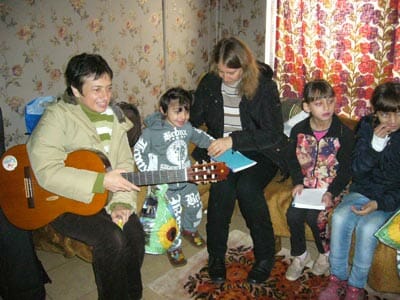
Jan 9, 2016 | Focolare Worldwide
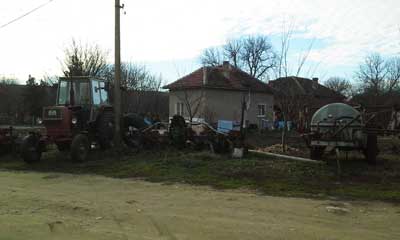 The members of the only Focolare Centre in Bulgaria, M. Lucia, Majda, Julia and Ildiko, from Italy, Slovenia, Germany and Romania, recounted: “Just before Christmas we went to Gostilya, a village to the north of Bulgaria, to visit friends who have been coming to the Mariapolis in Sofia over the last years. We wanted to show our gratitude and warmth by visiting them in their homes.” “We did not expect to find an almost deserted village,” they added. In fact, out of the 1,500 inhabitants at the start of the 1990s, the population now counts only about a hundred people due to the strong migratory phenomenon. There were about 20 young people. The school, nursery, library and other public facilities have been closed. The Catholic Church reopened three years ago, and the elderly deacon who was ordained lives the spirituality of unity.
The members of the only Focolare Centre in Bulgaria, M. Lucia, Majda, Julia and Ildiko, from Italy, Slovenia, Germany and Romania, recounted: “Just before Christmas we went to Gostilya, a village to the north of Bulgaria, to visit friends who have been coming to the Mariapolis in Sofia over the last years. We wanted to show our gratitude and warmth by visiting them in their homes.” “We did not expect to find an almost deserted village,” they added. In fact, out of the 1,500 inhabitants at the start of the 1990s, the population now counts only about a hundred people due to the strong migratory phenomenon. There were about 20 young people. The school, nursery, library and other public facilities have been closed. The Catholic Church reopened three years ago, and the elderly deacon who was ordained lives the spirituality of unity. 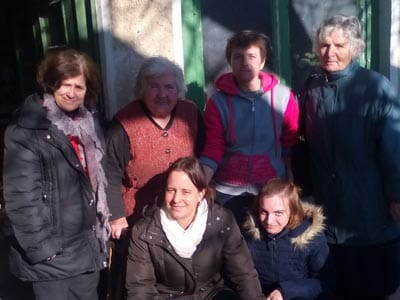 “We had prepared a bingo game with gifts for all and a chalk statue of Baby Jesus produced by children. We couldn’t imagine how much joy this would create: they were so grateful that someone had thought of going to visit them. A family that lived 30 km away also came and so did others who travelled three hours by car. The Mayor brought us on a “sightseeing” tour of the village.” “They vied with one another to give us something: a poor and sickly elderly lady who could not come to the meeting, baked sweet bread for breakfast. Before leaving, we dropped in on her to say thanks and give her a statue of Baby Jesus. She was moved, and listened to our Christmas carols at her doorstep. We also received a huge chicken for Christmas lunch, along with jars of honey and other preserved foods, which they specified to be “ecologically pure.”
“We had prepared a bingo game with gifts for all and a chalk statue of Baby Jesus produced by children. We couldn’t imagine how much joy this would create: they were so grateful that someone had thought of going to visit them. A family that lived 30 km away also came and so did others who travelled three hours by car. The Mayor brought us on a “sightseeing” tour of the village.” “They vied with one another to give us something: a poor and sickly elderly lady who could not come to the meeting, baked sweet bread for breakfast. Before leaving, we dropped in on her to say thanks and give her a statue of Baby Jesus. She was moved, and listened to our Christmas carols at her doorstep. We also received a huge chicken for Christmas lunch, along with jars of honey and other preserved foods, which they specified to be “ecologically pure.”  After Gostilya, we went to the extreme outskirts of the Bulgarian capital. In Sofia, on 24 December, the focolarine visited a Romani family with seven children, their friends for years now and who they try to help as much as possible. Majda had prepared them to receive the sacrament of Baptism, and another stood as godmother. To stress their love and esteem, the mother called the last child Majda, despite the fact that it is a Slovenian name and thus inexistent in Bulgaria. Julia, who instead works in a German school, spoke about this family to her colleagues who then donated clothes, foodstuffs and toys. “So we were able to prepare personalized gifts for each one – they said. A teacher asked them to take along her three children aged 8, 11 and 13 years, so they could see another reality, other than their own environment. Strengthened by such solidarity, we left for Botunetz, the name of the district where this family lives. We bought a small Christmas tree, so we could decorate it together. The mother had cleaned the house and dressed the children well, but there was so much humidity, cold and moulds. We passed a few hours with them, decorating the tree, singing Christmas carols, colouring drawings of the nativity scene, and unwrapping gifts. Everyone was happy and there was a real Christmas atmosphere. ” The same can be said of the traditional Christmas Mass in the jailhouse of Sofia, where a group of the Focolare Movement goes every year together with the Sisters of Charity of Mother Theresa, and for the festivities in a pensioners’ club. They said that this Christmas was one of sharing, in the name of joy, sobriety and solidarity. Maria Chiara De Lorenzo
After Gostilya, we went to the extreme outskirts of the Bulgarian capital. In Sofia, on 24 December, the focolarine visited a Romani family with seven children, their friends for years now and who they try to help as much as possible. Majda had prepared them to receive the sacrament of Baptism, and another stood as godmother. To stress their love and esteem, the mother called the last child Majda, despite the fact that it is a Slovenian name and thus inexistent in Bulgaria. Julia, who instead works in a German school, spoke about this family to her colleagues who then donated clothes, foodstuffs and toys. “So we were able to prepare personalized gifts for each one – they said. A teacher asked them to take along her three children aged 8, 11 and 13 years, so they could see another reality, other than their own environment. Strengthened by such solidarity, we left for Botunetz, the name of the district where this family lives. We bought a small Christmas tree, so we could decorate it together. The mother had cleaned the house and dressed the children well, but there was so much humidity, cold and moulds. We passed a few hours with them, decorating the tree, singing Christmas carols, colouring drawings of the nativity scene, and unwrapping gifts. Everyone was happy and there was a real Christmas atmosphere. ” The same can be said of the traditional Christmas Mass in the jailhouse of Sofia, where a group of the Focolare Movement goes every year together with the Sisters of Charity of Mother Theresa, and for the festivities in a pensioners’ club. They said that this Christmas was one of sharing, in the name of joy, sobriety and solidarity. Maria Chiara De Lorenzo

 Igino Giordani was a forerunner of ecumenism. His sensitivity to ecumenical issues began when in 1927, he embarked on a ship for the USA to study Library Science on behalf of the Vatican. It was there that he discovered that he still was unfamiliar with the various Christian denominations and was deeply struck by their religiosity. In many previous writings, Giordani affirmed that ecumenical dialogue draws inspiration from the model of Trinitarian relationships, because all are set on the same level of love. Communion calls all to dialogue, and in the same measure, all are called to give of themselves to create unity. “In the past, discussions were undertaken to eliminate divisions; today the preferred method is respectful confrontation of ideas, and the effort to reach a convergence and reconciliation. The concept today is that unity is not static but dynamic, and grows in quantity and quality. Dialogue thus marks an innovative “historic turning point,” overcoming controversies, disagreements, excommunication, and likewise sets the grounds for comprehension, approach to the truth and virtues of the others. Dialogue, through which advocates of one or more churches get together, is neither propagandistic nor academic. Possessing the truth does not hinder the inexorable penetration of the mysteries or the real progress of the dogmas which are to be studied in depth, and reinterpreted.
Igino Giordani was a forerunner of ecumenism. His sensitivity to ecumenical issues began when in 1927, he embarked on a ship for the USA to study Library Science on behalf of the Vatican. It was there that he discovered that he still was unfamiliar with the various Christian denominations and was deeply struck by their religiosity. In many previous writings, Giordani affirmed that ecumenical dialogue draws inspiration from the model of Trinitarian relationships, because all are set on the same level of love. Communion calls all to dialogue, and in the same measure, all are called to give of themselves to create unity. “In the past, discussions were undertaken to eliminate divisions; today the preferred method is respectful confrontation of ideas, and the effort to reach a convergence and reconciliation. The concept today is that unity is not static but dynamic, and grows in quantity and quality. Dialogue thus marks an innovative “historic turning point,” overcoming controversies, disagreements, excommunication, and likewise sets the grounds for comprehension, approach to the truth and virtues of the others. Dialogue, through which advocates of one or more churches get together, is neither propagandistic nor academic. Possessing the truth does not hinder the inexorable penetration of the mysteries or the real progress of the dogmas which are to be studied in depth, and reinterpreted.  “Ecumenical dialogue does not arise from the doctrinal differences between the two (or more) churches, but from unity which already exists among them, from a common heritage. The psychological atmosphere is kindness, or rather, charity. In the words of Maritain: “Perfect charity towards one’s neighbour and perfect fidelity to the truth are not only compatible but refer to one another.” For the prophetic mission of the People of God, the Christian has to convey the truths he possesses and allow the other to convey the truths he holds. For such a prophetic mission, the Christian must not limit dialogue to the theological aspect (making it a task for experts). Unity is not only a technical and theological issue, it is a question of charity. «The interlocutors have to treat each other as peers, and with reciprocal esteem, no insinuations or sly tricks, and no offensive words. This equality does not signify confusion or adjustment of doctrines. It implies for both, awareness of belonging to the Mystical Body of Christ. They have to accept pluralism, recognising every legitimate diversity. What unites the faithful is stronger than what divides them (Gaudium et Spes, 92). Otherwise, dialogue is reduced to an alternated monologue. All Christians are called to practice dialogue which can be enhanced by every encounter (work, tourism, studies, etc.). No fences can be allowed between one confession and the other: but all doors should be opened to reach an encounter and dialogue. The job is long and tedious, but God wants this from us.”
“Ecumenical dialogue does not arise from the doctrinal differences between the two (or more) churches, but from unity which already exists among them, from a common heritage. The psychological atmosphere is kindness, or rather, charity. In the words of Maritain: “Perfect charity towards one’s neighbour and perfect fidelity to the truth are not only compatible but refer to one another.” For the prophetic mission of the People of God, the Christian has to convey the truths he possesses and allow the other to convey the truths he holds. For such a prophetic mission, the Christian must not limit dialogue to the theological aspect (making it a task for experts). Unity is not only a technical and theological issue, it is a question of charity. «The interlocutors have to treat each other as peers, and with reciprocal esteem, no insinuations or sly tricks, and no offensive words. This equality does not signify confusion or adjustment of doctrines. It implies for both, awareness of belonging to the Mystical Body of Christ. They have to accept pluralism, recognising every legitimate diversity. What unites the faithful is stronger than what divides them (Gaudium et Spes, 92). Otherwise, dialogue is reduced to an alternated monologue. All Christians are called to practice dialogue which can be enhanced by every encounter (work, tourism, studies, etc.). No fences can be allowed between one confession and the other: but all doors should be opened to reach an encounter and dialogue. The job is long and tedious, but God wants this from us.”

 “We wanted to give a testimonial of an experience which has transformed us, and that took place on 11-13 December 2015. On this occasion some members of the Jewish Bet-El Community and the inhabitants of the Focolare town, prayed for one another,” wrote the Argentinean Rabbi, Silvina Chemen and Carlos Becaría and Nanni Espinosa of Mariapolis Lia. A special Shabbath. “We started by gathering bread for the rit,” Silvina recounted, “then we participated and shared this moment in which the Hanuka candles were lit, and we recalled the historical pact celebrated by
“We wanted to give a testimonial of an experience which has transformed us, and that took place on 11-13 December 2015. On this occasion some members of the Jewish Bet-El Community and the inhabitants of the Focolare town, prayed for one another,” wrote the Argentinean Rabbi, Silvina Chemen and Carlos Becaría and Nanni Espinosa of Mariapolis Lia. A special Shabbath. “We started by gathering bread for the rit,” Silvina recounted, “then we participated and shared this moment in which the Hanuka candles were lit, and we recalled the historical pact celebrated by 





 “A society is good when the last and smallest member of society will have the opportunity to produce and earn sufficiently for a decent and dignified living.” This was the ideal of the philosophy which in 1986 pushed Dr Aram and his wife, Minoti, and a group of Gandhian friends, to start up the Shanti Ashram of Coimbatore in Tamil Nadu. Literacy, development of the conditions of women, healthcare, environmental politics, battle against poverty, leadership programs for the youth and projects for children, are the actions promoted by the Ashram, of which the Bala Shanti project is part, and which was created in 1991 to help the very poor children in the surrounding villages. In 2013, Mrs Minoti wrote: “Tagore, the much loved poet and Nobel Prize awardee said: ‘Every boy and girl is a harbinger of the message that God still has not lost hope in man.’ It is in this context that I see the work for our children: to be able to serve one of the most precious gifts of God to humanity.” Initially the Bala Shanti project aimed to offer nutrition, education and healthcare to a small group of children from the ages of 3 to 5. Today the project helps thousands of children in 17 villages, who are in turn directly involved with their families in the battle against poverty, stirring up a proactive social participation.
“A society is good when the last and smallest member of society will have the opportunity to produce and earn sufficiently for a decent and dignified living.” This was the ideal of the philosophy which in 1986 pushed Dr Aram and his wife, Minoti, and a group of Gandhian friends, to start up the Shanti Ashram of Coimbatore in Tamil Nadu. Literacy, development of the conditions of women, healthcare, environmental politics, battle against poverty, leadership programs for the youth and projects for children, are the actions promoted by the Ashram, of which the Bala Shanti project is part, and which was created in 1991 to help the very poor children in the surrounding villages. In 2013, Mrs Minoti wrote: “Tagore, the much loved poet and Nobel Prize awardee said: ‘Every boy and girl is a harbinger of the message that God still has not lost hope in man.’ It is in this context that I see the work for our children: to be able to serve one of the most precious gifts of God to humanity.” Initially the Bala Shanti project aimed to offer nutrition, education and healthcare to a small group of children from the ages of 3 to 5. Today the project helps thousands of children in 17 villages, who are in turn directly involved with their families in the battle against poverty, stirring up a proactive social participation. 



 The members of the only Focolare Centre in Bulgaria, M. Lucia, Majda, Julia and Ildiko, from Italy, Slovenia, Germany and Romania, recounted: “Just before Christmas we went to Gostilya, a village to the north of Bulgaria, to visit friends who have been coming to the
The members of the only Focolare Centre in Bulgaria, M. Lucia, Majda, Julia and Ildiko, from Italy, Slovenia, Germany and Romania, recounted: “Just before Christmas we went to Gostilya, a village to the north of Bulgaria, to visit friends who have been coming to the  “We had prepared a bingo game with gifts for all and a chalk
“We had prepared a bingo game with gifts for all and a chalk